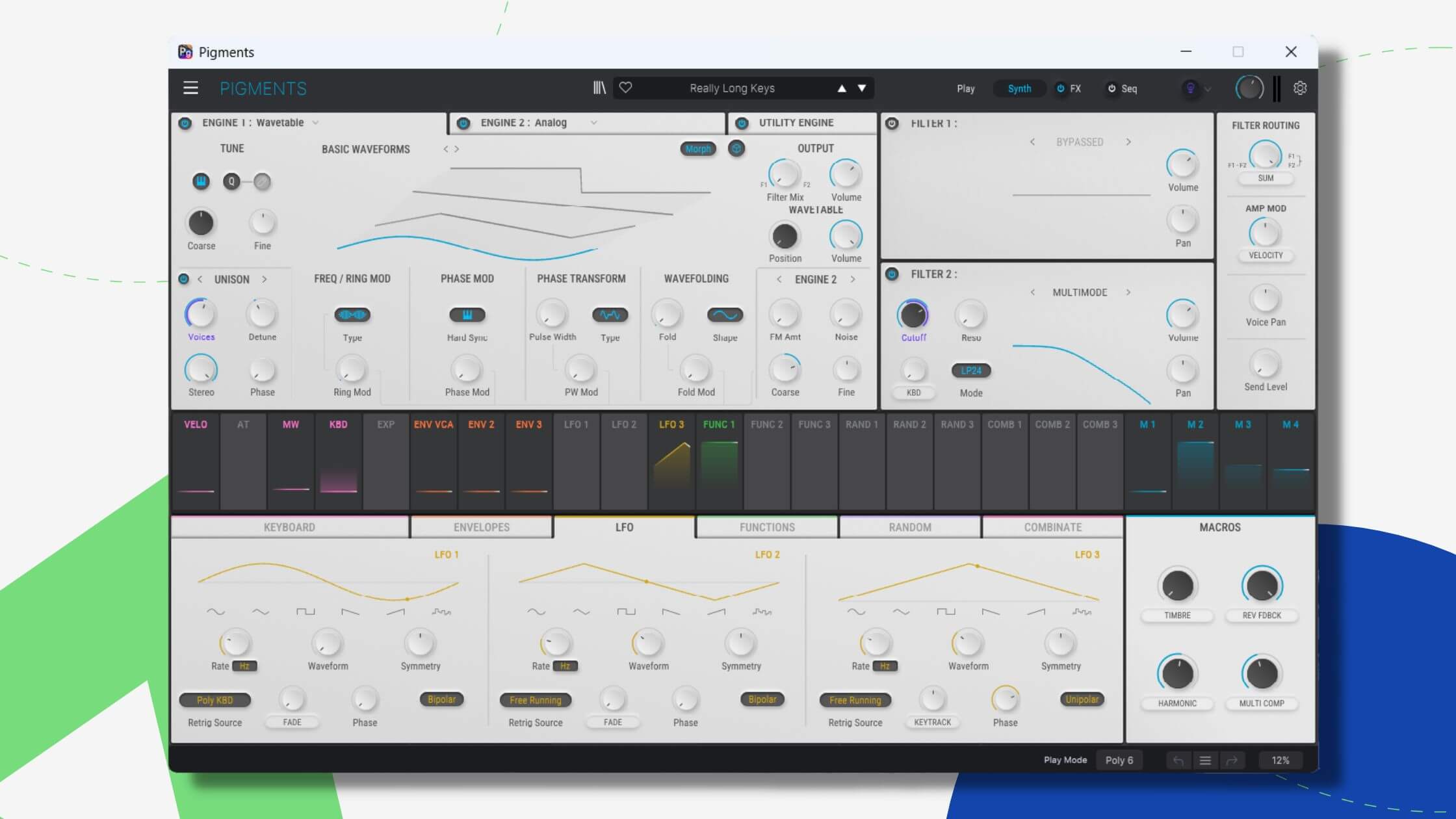Review: Pigments 4 by Arturia – a soft synth that offers more and more in a streamlined fashion
Arturia recently released Pigments 4, a highly anticipated update to their flagship software synthesizer, which has brought lots of new content and functionality.
Arturia’s Pigments is an incredibly flexible synth – and I’d go as far as to say its only rival in flexibility is Phase Plant by kHs One. For instance, Pigments gives you 4 different engines – subtractive, additive, and wavetable synth engines, in addition to a granular sampler! Ultimately, Pigments 4 is for experienced sound designers and hardcore music producers who like to explore the depths of sound.
Arturia describes Pigments as a “polychrome” synthesizer, meaning “multi-colored”. Even on the surface, Pigments is a delicious-looking synthesizer with a palette of colors to mesmerize your eyes. But in terms of sound, you can blend tones from two of the aforementioned engines at once and create some downright spectacular sounds. And, in addition, you have a third Utility engine that provides two noise generators and a sub-generator for adding thickness to your sound.

While the signal chain and layout of the interface has not changed since Arturia released Pigments 3, the developer has added some awesome enhancements to its flagship software synthesizer. And Pigments 4 offes lot sof new content, some new parameters, and improved functionality that removes distractions – so let’s take a look at all of this new stuff!
A new look with an enhanced workflow
Okay, so while Pigments mostly retains the same interface design, it now offers a new light theme in addition to its original dark mode. Meanwhile, a new Play mode gives you an overview of the entire synth – meaning you can focus on the most important controls of each module. I think this new Play mode is a fantastic idea because Pigments just offers so much and it can get very distracting. Now, new users can use its Play mode to get stuck in with less faff and use the onboard tutorials to gain a better understanding of the synth at the same time.
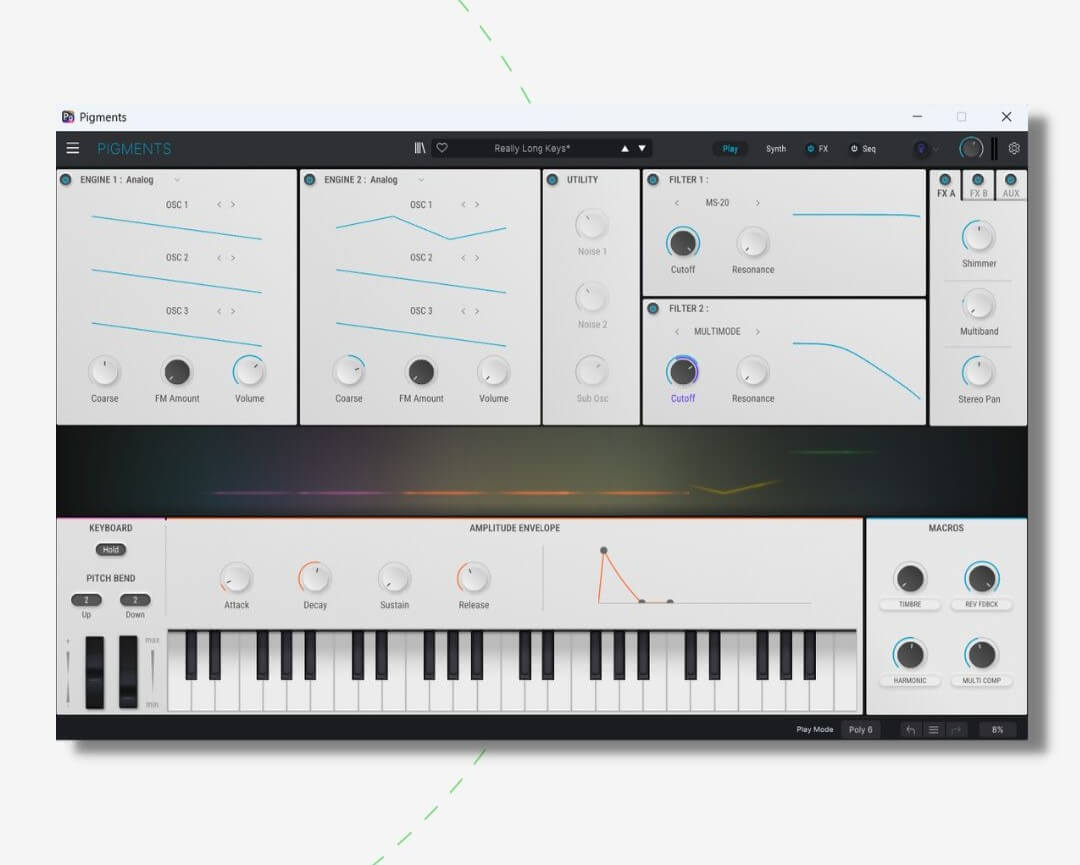
Before, assigning modulation was a little bit of a hassle in Pigments 3. You’d have to click on the modulator to open it up and then drag the parameter you want to modulate into one of the empty mod slots. And compared to synths like Vital where assigning modulation is as easy as dragging and dropping modulators across its open interface and onto parameters, Pigments 3 simply added time where I feel it didn’t need to.
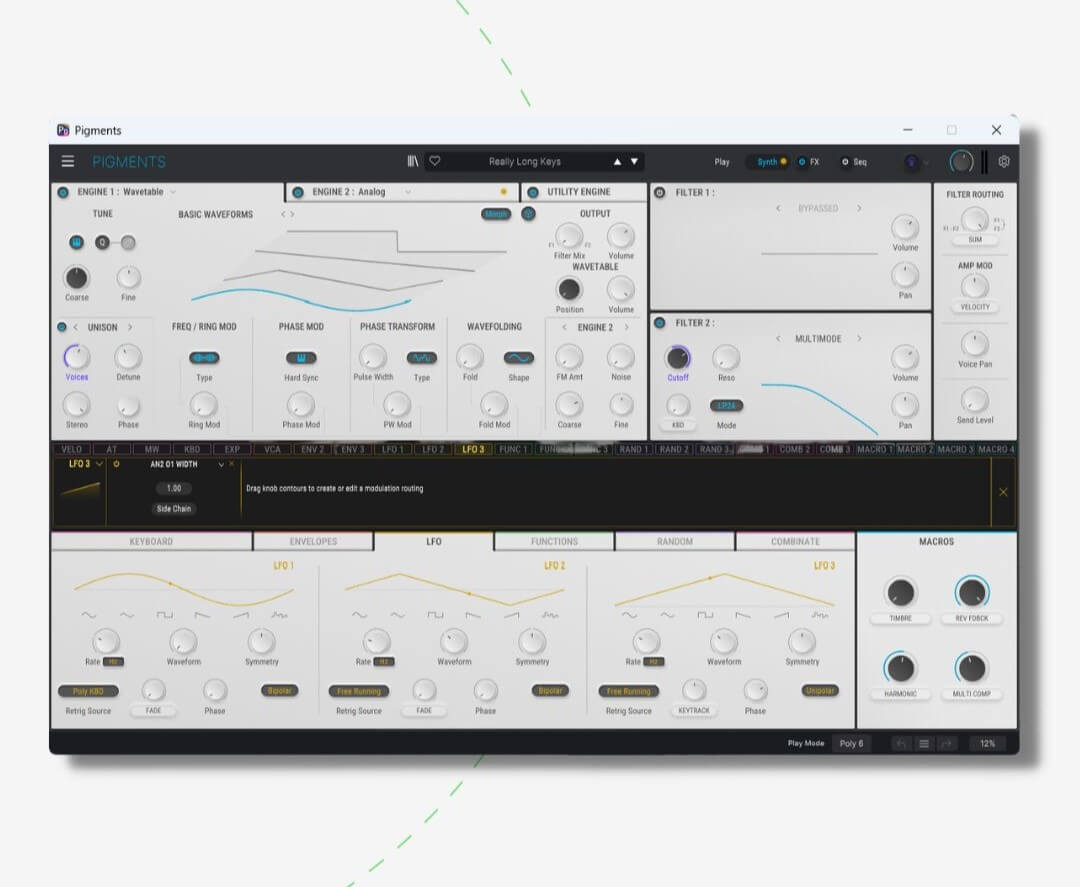
Well, now, Pigments 4 offers easier modulation assignments and a number of new LFO presets. Before, the LFOs in pigments were limited in scope because they only offered basic shapes much like original synth LFOs. Meanwhile, its Function modulators undertook the modulation tasks that modern LFOs in synths like Vital & Serum would perform. While the LFOs in Pigments 4 are still based on basic analog shapes, there are now more of them!
Under the hood…
That’s the new look of Pigments covered – but the enhancements do go deeper.
For example, the synth engines have seen some upgrades – each has been given some new additions that give each more scope for creating new, unique timbres. Firstly, the harmonic engine has a new phase modulation parameter while the wavetable engine has a ring modulation & phase transformation setting. And, finally, every engine has some new cross-modulation options in addition to advanced enhanced unison options.

Furthermore, both filters in Pigments’ signal chain continue to provide a smooth workflow with all the flexibility you need. In Pig4ments 4, these filters have seen the addition of the developers’ modeled filter based on Korg’s MS-20 filter. It’s the same filter you’ll find in Arturia’s MS-20 filter distortion plugin, and it does very well in emulating the crisp, gritty filter of the Korg MS-20 synthesizer. A very welcome addition if I do say so myself!
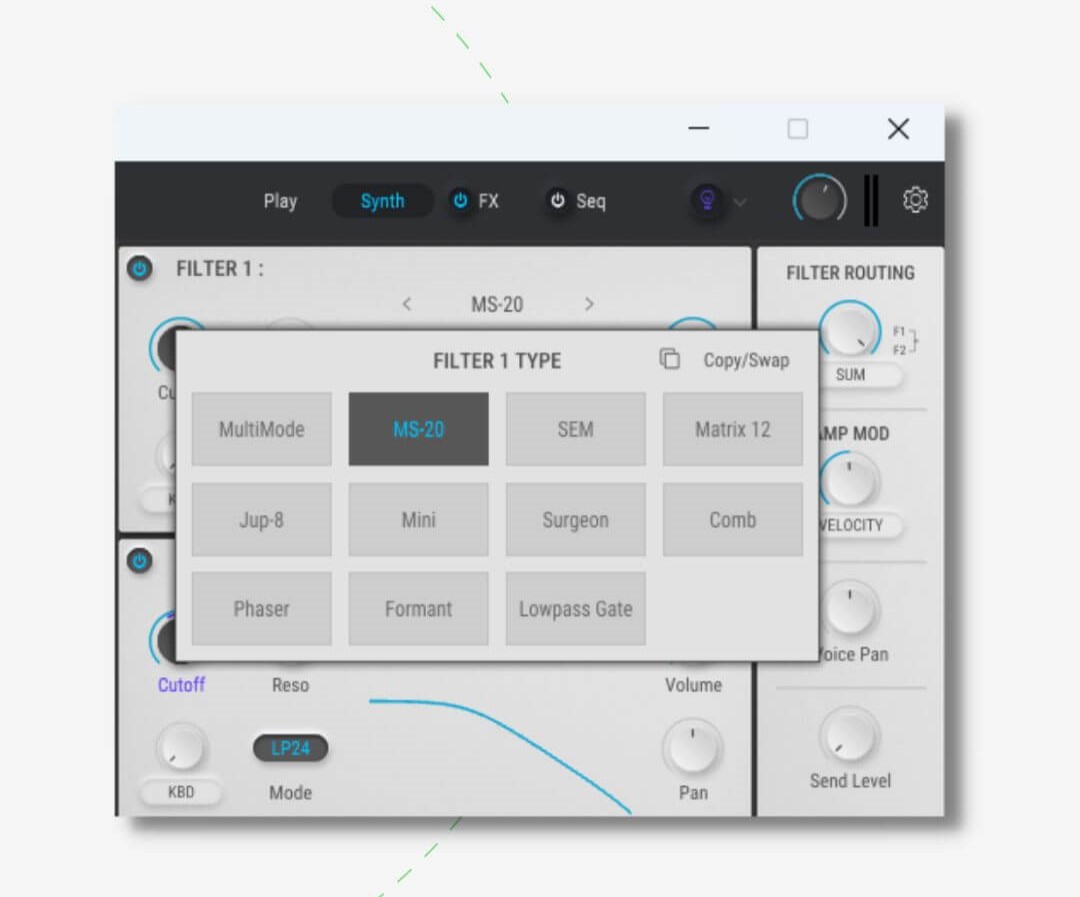
You’ll also find a new set of effect modules in Pigments’ effects tabs. A new “Shimmer” effect offers a luscious reverb that combines pitch shifting and modulation, and a new “Super Unison” effect gives you a somewhat unique style of chorus effects.
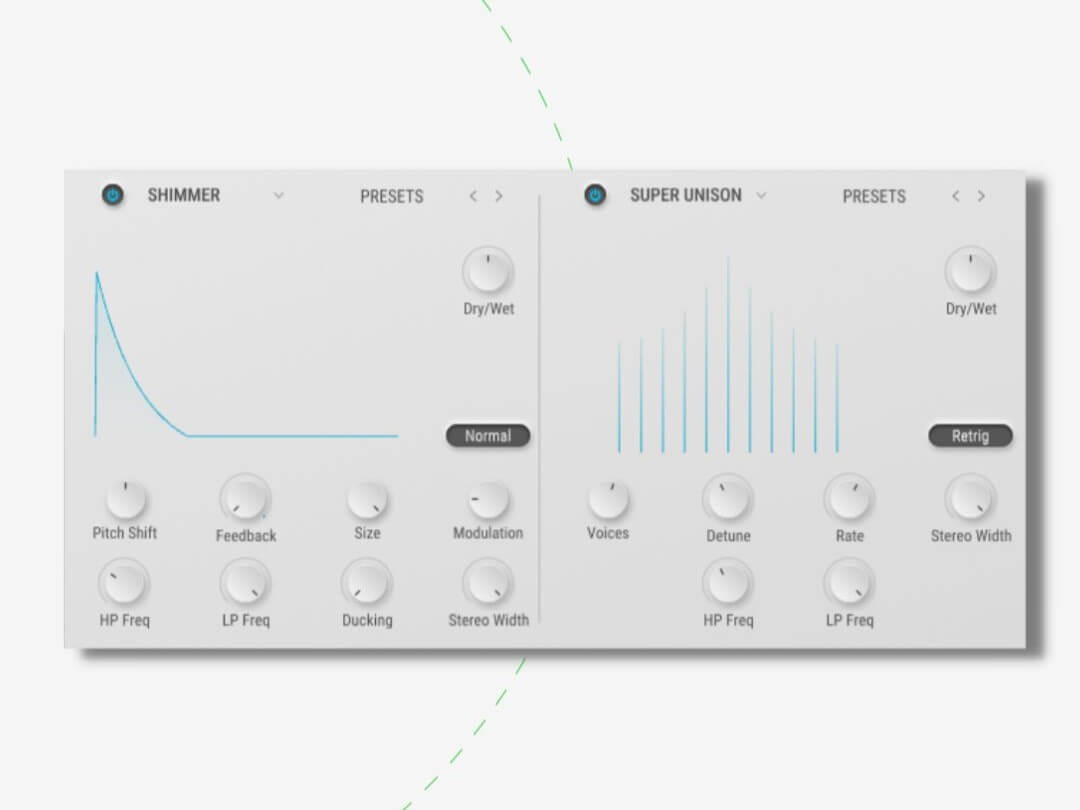
New wavetables, sounds, and noises
Pigments 4 comes with a lot of new content for users to play with. You’ll find a total of 63 new wavetables available to you, 67 new samples to play with in the sample engine, and 36 new noise types that offer a large contrast in textures.
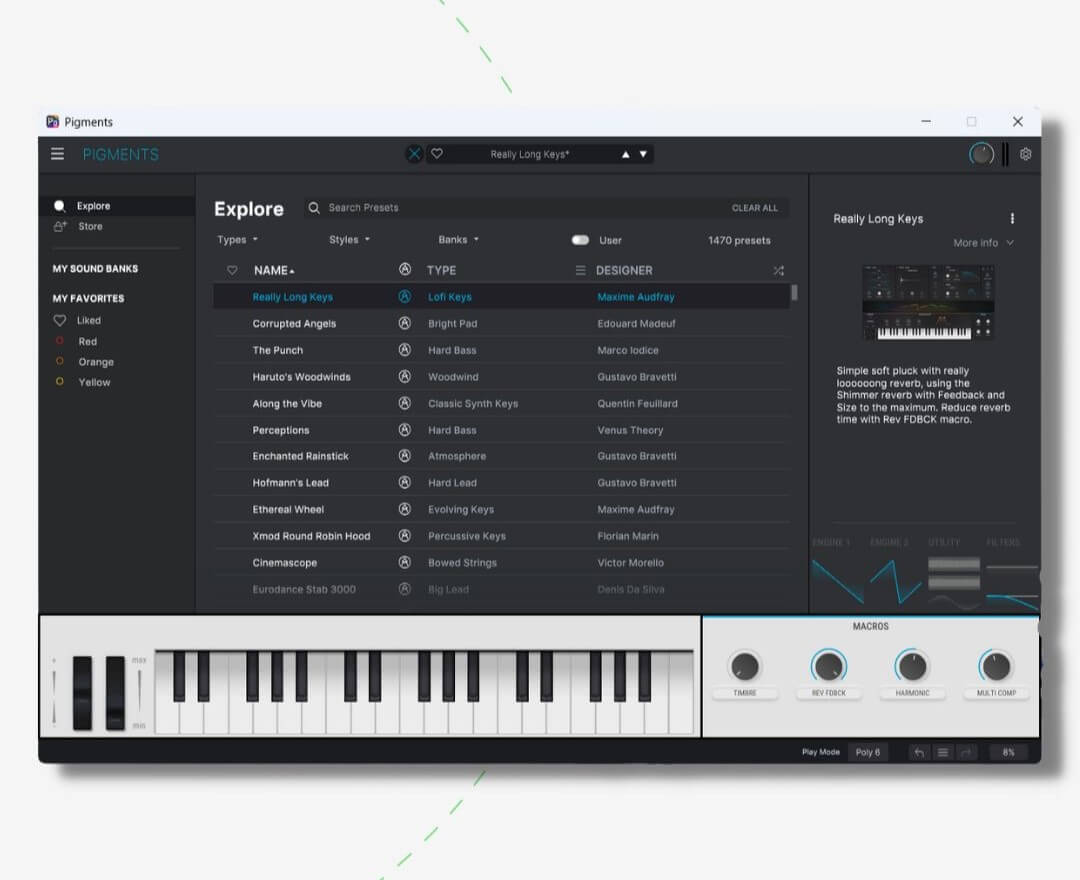
In addition to the content already provided with Pigments 2, 3, and 3.5, all of this new content is available in the new collection of “Factory” presets and within three new sound banks: Wavelengths Cinematic, Wavelengths Neuro Bass, and Wavelengths Lo-fi. In fact, these soundbanks each offer 150 presets that demonstrate the capabilities of Pigments pretty magnificently.
Totaled, every old & new bit of content sums to almost 2,000 presets!
Conclusion
Pigments has been making waves for a few years now, and I think it will continue to do so. Arturia’s flagship software synthesizer’s latest update gives you so much more to play with in a more streamlined fashion.
Because Arturia’s Pigments offers so much, a totally fair criticism of it is that it is easy to get lost. In practice, you can begin with a goal but actually fall down the rabbit hole of playing with EVERYTHING – only to end up back where you started because there’s so much to play with. Though this may still occur, Arturia has at least noticed the problem and has provided a few ways of working that make it less likely. Pigments’ new Play view makes the Pigments soft synth a lot more beginner friendly.
In summary, Pigments now offers a tonne of more content and functionality in addition to a new, optional, lick of paint. If you’re like me sound design is a big part of your production process then Pigments is for you. However, if you’re new to sound design then I wouldn’t recommend starting with Pigments. Check out a soft synth like Super 8, a subtractive poly synth that will teach you how synth signal chains work, or you can jump in with Vital – a free wavetable synthesizer that’s perfect for big Dubstep basses and industrial sounds.
Pigments 4 is available in AAX, AU, and VST plugin formats in addition to the standalone format. The Pigments 4 update is available to all previous owners of Pigments, but its retail price is $199.
